Uncover Chateauneuf du Pape's vibrant flavors and culinary gems with our expert guides. Plan an unforgettable trip now!
Read more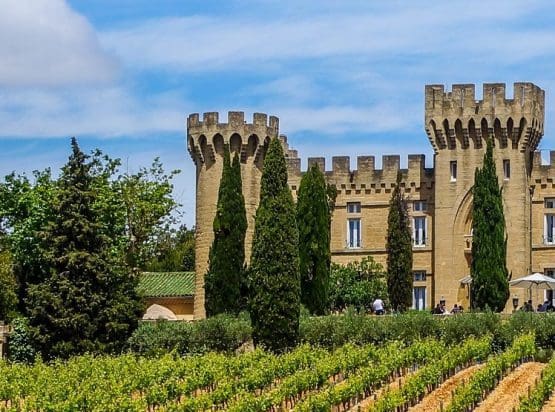
EXPLORE ALL OUR RHôNE VALLEY WINE REGION GUIDES
Last updated: April 4, 2025
Châteauneuf-du-Pape is perhaps the most complex of the great southern Rhône wine regions. The enduring cliché is the fruit bomb caricature: brash, alcoholic, and overplayed. Even today, certain oenophiles regard the appellation as a monolith.
But the reality could not be more different; Châteauneuf-du-Pape comes in various guises, from medium-bodied (and elegant) reds to exotic, powerfully structured wines. As with the northern Rhône, there is a considerable diversity of styles – including white wines – due to winemaking, viticultural philosophy, and variations in terroir. If you seek intellectual depth from your favorite tipple, look no further than Châteauneuf-du-Pape.
Discover More About French Wine
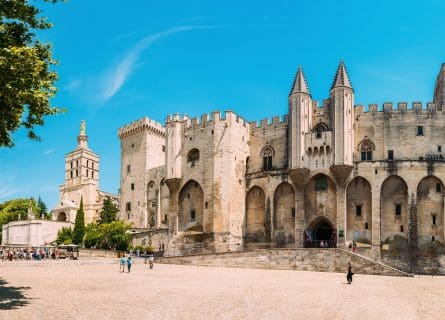
Châteauneuf-du-Pape boasts a rich and colorful history. The southern Rhône has hosted an eclectic mix of cultures over the centuries, including the Celts, Ligurians, and Greeks. Greek mariners, arriving from the eastern Mediterranean in 600 BC, founded the city of Marseille, known in ancient times as Massilia.
However, during Julius Caesar’s conquest of Gaul in the mid-1st century BC, Massilia incurred the wrath of the Roman legions by siding with Pompey the Great; as a punishment, Caesar directed trade to rival ports in the Mediterranean.
Nevertheless, the Latin conquerors, very taken with the bucolic landscape of southern France, called it ‘Provincia Romana.’ During this period, as the Western Empire flourished on the back of trade and colonization, Châteauneuf-du-Pape developed its first proper wine industry.
The Dark Ages and the Rise of the Frankish Empire
However, Rome’s authority started to weaken in the 5th century due to a mixture of arrogance and overreach. After the disintegration of the Western Roman Empire in 476 AD, the Visigoths, Vandals, and Ostrogoths all attempted to plant their flag on French soil.
Yet a rising power was about to alter the course of European politics forever: King Clovis I united the schismatic Frankish tribes in the Dark Ages, laying the foundations for the Holy Roman Empire after his conversion to Christianity. He also spearheaded a number of very successful campaigns against the Alemanni and Visigothic remnants in Gaul while gaining new territories across Europe. It was a glorious era for the Merovingian and Carolingian dynasties.
The Avignon Papacy and Châteauneuf-du-Pape’s Golden Age
During the early 1300s, the Catholic Church – under a series of French-born popes – moved its headquarters from feud-riven Rome to Avignon, thus beginning the most resplendent period in the history of the southern Rhône.
Châteauneuf-du-Pape – formerly just Châteauneuf – grew rich from the salt trade. Seven successive popes invested unprecedented sums of money in building and decorating a papal palace near Avignon.
Meanwhile, viticulture thrived in the warm Mediterranean climate of Châteauneuf-du-Pape and its environs, producing spicy red wines often used to adulterate the more pallid concoctions of northern France. Pope John XXII, an aficionado of what was known as ‘Vin de Pape,’ drove major improvements in local wine growing. He was also responsible for building the ornate castle, which has since become the region’s totem.
Political Upheavals and the End of Papal Avignon
However, political turmoil returned in 1376 after Pope Gregory XI left Avignon, leading to the so-called ‘Great Schism’ of the early 15th century. Various popes fought among themselves until the papacy relocated to Rome. Yet, even after settling the feud, Avignon remained under papal rule. Papal legates controlled the city and surrounding area until 1791, when a unified French state annexed Avignon.
The Appellation Structure of Châteauneuf-du-Pape
In the 20th century, Châteauneuf-du-Pape was one of the first French vineyards to create a formalized appellation structure. Baron Le Roy, the owner of one Château Fortia, decided to unify the region in the 1920s to market its wines better.
His undertakings set out the geographical boundaries, production rules (the appellation only allows a yield of 35 hectolitres per hectare), and grape varieties – very much a precursor to the modern appellation “d’origine contrôlée” system.
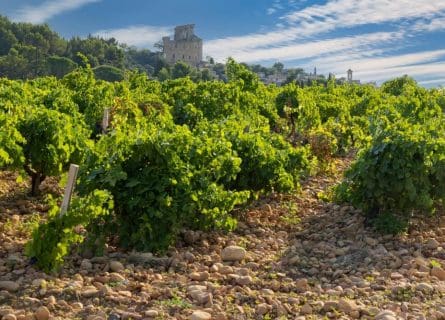
The southern Rhône Valley village of Châteauneuf-du-Pape, nestled between Orange and Avignon, produces both red and white wines, earning it a reputation for deliciousness. The geographical area under vine is far wider and more expansive than the northern section, with the city of Montelimar marking a boundary that separates the two sub-regions. Nevertheless, it is probably one of the most beautiful places in south-eastern France – a timeless landscape of garrigue-covered hills that the Romans once inhabited.
The Challenge of Alcohol Levels
Châteauneuf-du-Pape boasts the highest minimum alcohol level in France, at 12.5 degrees. But that’s just the starting point. In southern Rhône’s classic Mediterranean climate, even 13.5% alcohol would be considered unusually low. With increasingly torrid summers and very mild winters, maintaining acidity and freshness is the overriding priority in Châteauneuf-du-Pape. If the grower is not careful, unctuous sweet berries will be the fruits of their hard work, with a potential alcohol of 16 degrees.
Nevertheless, the terroir is very heterogeneous, with abundant higher altitudes and cooler sites. The best winegrowers judiciously exploit these factors in their quest to create powerful and fresh wines with perfect balance – the true mark of greatness.
Galets and the Diversity of Soils
Nevertheless, Châteauneuf-du-Pape does have an emblematic terroir. Scattered across the landscape lie galets, heat-absorbing stones that actively reflect warmth back the vine canopy. While their influence may wane in hot years, galets prove particularly beneficial during cooler vintages.
Such conditions still occur in the southern Rhône despite the onward march of global warming. Elsewhere, the soils can vary from sand and alluvial matter to clay-rich terroir. Clay’s ability to retain moisture in warmer seasons gives winegrowers a decisive advantage.
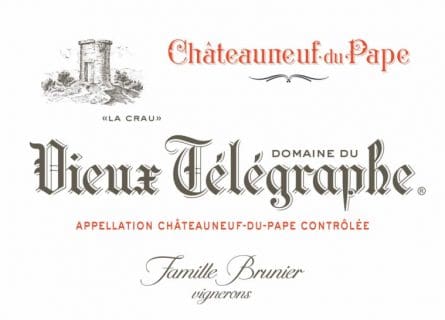
There is no standardized winemaking formula in Châteauneuf-du-Pape. The appellation regulations permit 18 grape varieties (red and white) in the final cuvée.
However, most producers prioritize three red grapes: Grenache, Syrah, and Mourvedre. Winemakers may then incorporate smaller amounts of Cinsault, Counoise (an esoteric local term), and Vaccarese into the blend. However, preferences vary wildly, depending on the desired style and vintage factors.
Winemaking Decisions: From Barrique to Bunches
In addition, there is fierce disagreement over the role that new French barrique should play, while carbonic maceration is becoming more popular for fruit-driven wines intended for drinking young. Others favor using whole bunches and stems to add tannic heft and structure in the vat. On the other hand, too much can lead to astringency and bitter tannins on the finish.
Approachability and Complexity
So how can we sum up red Châteauneuf-du-Pape? It is fair to say that the critical mass of premium wines offer upfront fruit and richness on the mid-palate, yet they are approachable from a relatively young age. Unlike Cabernet Sauvignon, Grenache (which usually plays the dominant role) does not boast a massively tannic structure, even in its youth.
Instead, these are wines driven by red fruit, spice, and balanced levels of relatively high alcohol. However, skilled winemakers always ensure their creations refresh and challenge the palate.
The Pinnacle of Châteauneuf-du-Pape
The seminal Châteauneuf-du-Pape red is undoubtedly Domaine du Vieux Télégraphe La Crau. Anyone fortunate enough to try a glass will confirm that the finesse, potency, and complexity have no equal; imbued with aromas of garrigue, smokey dark fruit, and spice, the palate is always balanced and racy, with flavors of raw meat, forest floor, and raspberry. But the freshness and gorgeous ripe acidity elevate Vieux Télégraphe above its peers.
Châteauneuf-du-Pape is in a quandary. Outflanked by the popularity of Côte Rôtie and Hermitage, the appellation’s greatest strength has become, paradoxically, its biggest weakness. Châteauneuf-du-Pape is a region of incredible diversity – it boasts an enviable palate of grapes, terroirs, and mesoclimates.
At its best, the style is a tour de force of voluptuous concentration: a poster child for the sorely underrated Grenache Noir. Indeed, these potent reds are beguilingly rich on the mid-palate, with a finish that stretches beyond the realms of imagination.
Yet the considerable production of the zone, the plethora of obscure – and unpronounceable – grape varieties, and the years of ‘dumbing-down’ have all helped to obscure its superlative quality. To be frank, Châteauneuf-du-Pape needs to work on its global image.
Embracing Terroir: A Path to Premiumization
Fortunately, the region still has a few aces up its sleeve. In the current zeitgeist, promoting and discussing terroir has become the surest way to encourage premiumization – wine lovers want authentic (and unique) wines that demonstrate a sense of place. Traditionally, producers in Châteauneuf-du-Pape owned plots across several terroirs in the appellation, blending different wines to enhance complexity.
However, the value of celebrating and marketing single vineyards has touched the southern Rhône; single-site bottlings, often expensive, are becoming more widespread. They offer consumers entry into this complex region while helping to close the gap between Châteauneuf-du-Pape and its competitors. In this regard, a codified ranking of terroir would help matters.
The Unofficial ‘Grand Cru’: La Crau
Unlike Burgundy, however, Châteauneuf-du-Pape has never embarked upon a formalized classification of its soils. Yet the appellation does boast at least one unofficial ‘Grand Cru vineyard: La Crau. It is situated between the villages of Châteauneuf-du-Pape and Bédarrides, at the extreme southeast of the appellation boundaries. Here, on a plateau full of the signature galets, magic happens. No one knows why La Crau always produces the most structured and complex wines.
However, the ancient alluvial deposits, silica, and robust red clay undeniably play an important part. La Crau is mysterious, and that’s how local growers like it. Nevertheless, it wouldn’t hurt to make more of this valuable asset.
The Ascendancy of Châteauneuf-du-Pape Blanc
We should also mention the growing importance of Châteauneuf-du-Pape Blanc. Historically, this oxidative and rustic local style was as appealing as typhus; however, thanks to dramatic improvements in viticulture and winemaking, it now represents excellent value for money.
Cool fermentations in stainless steel (and the judicious use of oak) produce full-bodied and complex wines of great interest. Many white varieties can be used in the blend, although growers often favor Grenache Blanc, Clairette Blanc, and Roussanne, contributing body, aroma, and structure, respectively.
With bottle age, they develop considerable finesse and attractive scents of lemongrass, honeysuckle, and wet wool. This is definitely a niche to explore further, with ample scope to dramatically increase production in the zone.
Climate Change and Resilience
Meanwhile, climate change is pushing vines—and their growers—to the limits of their endurance and ingenuity. But the region’s devoted and charismatic winemaking community perseveres. Their passion for these glorious wines and the welcoming attitude shown to newcomers are among the most delightful things about visiting the southern Rhône.
With growing tourism and a pioneering younger generation taking the reins, Châteauneuf-du-Pape has an unprecedented opportunity to remedy the mistakes of the past. Let’s hope they grab it.
Bourboulenc is a white wine grape variety grown mainly in Southern Rhône, Provence, and Languedoc in southern France.
Find out moreSavor Clairette blanche, a captivating white wine grape from France's Chateauneuf-du-Pape, Provence, Rhône, and Languedoc vineyards
Find out moreGrenache blanc is a white wine grape varietal popular in the Rhône, Châteauneuf-du-Pape and Languedoc-Roussillon regions of Southern France.
Find out moreGrenache Gris is a rare, pinkish-grey variant of the red Grenache grape from southern France. Often blended into other wines, it's drought-resistant and thrives in warm climates. Wines from this grape are uncommon and offer apricot and stonefruit aromas with a full palate, resembling Viognier but without its herbal notes.
Picardan is a white wine grape varietal and is one of 13 permitted in blending within the Châteauneuf-du-Pape appellation.
Find out morePicpoul Blanc is a white wine grape varietal grown primarily in the Rhone Valley and Languedoc-Roussillon regions of France.
Find out moreLearn about Roussanne, the elegant white grape native to Rhône. Often blended with Marsanne, explore its unique qualities and rich heritage in our guide.
Find out moreDiscover grenache, a mediterranean grape that is dark-skinned red wine grape variety and an unlikely hero of a grape
Find out moreCarignan is a red grape variety that grows mostly in Southern France, and is often used as a blending grape
Find out moreCinsault is a red wine grape that is important in the Languedoc-Roussillon wine region of France because of its tolerance to high temperatures.
Find out moreMourvèdre is a red wine grape variety of mysterious origin that's grown around the world, including the Rhone and Provence regions of France.
Find out moreSyrah is dark-skinned and perhaps the most underrated of the 'noble' red grape varieties.
Find out moreTerret noir is a dark-skinned grape variety from France's Rhône valley and a mutation of the ancient Terret vine. It's allowed in Châteauneuf-du-Pape blends and, like its relatives, Terret gris and Terret blanc, buds late and grows vigorously. The grape yields light-colored, tart, perfumed wines
Most visitors to the southern Rhône inevitably find themselves in the handsome city of Avignon. Count yourself lucky: Avignon is surrounded by the Provencal cliches of lavender fields, vineyards, olive groves, and market gardens.
These all provide a surfeit of fresh produce that the city’s talented chefs wisely exploit. Feast on asparagus ravioli, Camargue lamb, and magret de canard while savoring the heady scent of locally grown Grenache. Welcome to Provence.
A Gastronomic Guide to Provencal Cuisine: Read more

Uncover Chateauneuf du Pape's vibrant flavors and culinary gems with our expert guides. Plan an unforgettable trip now!
Read more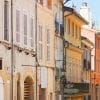
Uncover Aix-en-Provence's vibrant flavors and culinary gems with our expert guides. Plan an unforgettable trip now!
Read more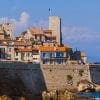
Uncover Antibes' vibrant flavors and culinary gems with our expert guides. Plan an unforgettable trip now!
Read more
Uncover Avignon's vibrant flavors and culinary gems with our expert guides. Plan an unforgettable trip now!
Read more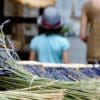
Uncover Gigondas's vibrant flavors and culinary gems with our expert guides. Plan an unforgettable trip now!
Read more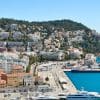
Uncover NIce's vibrant flavors and culinary gems with our expert guides. Plan an unforgettable trip now!
Read more
Uncover Marseille's vibrant flavors and culinary gems with our expert guides. Plan an unforgettable trip now!
Read more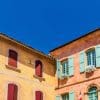
Uncover Orange's vibrant flavors and culinary gems with our expert guides. Plan an unforgettable trip now!
Read moreIf you would like us to customize an exclusive luxury tour, contact us and let us know your travel plans. We offer luxury food and wine tours for private groups of a minimum two guests. In addition, all of our private, chauffeured tours are available year-round upon request.

